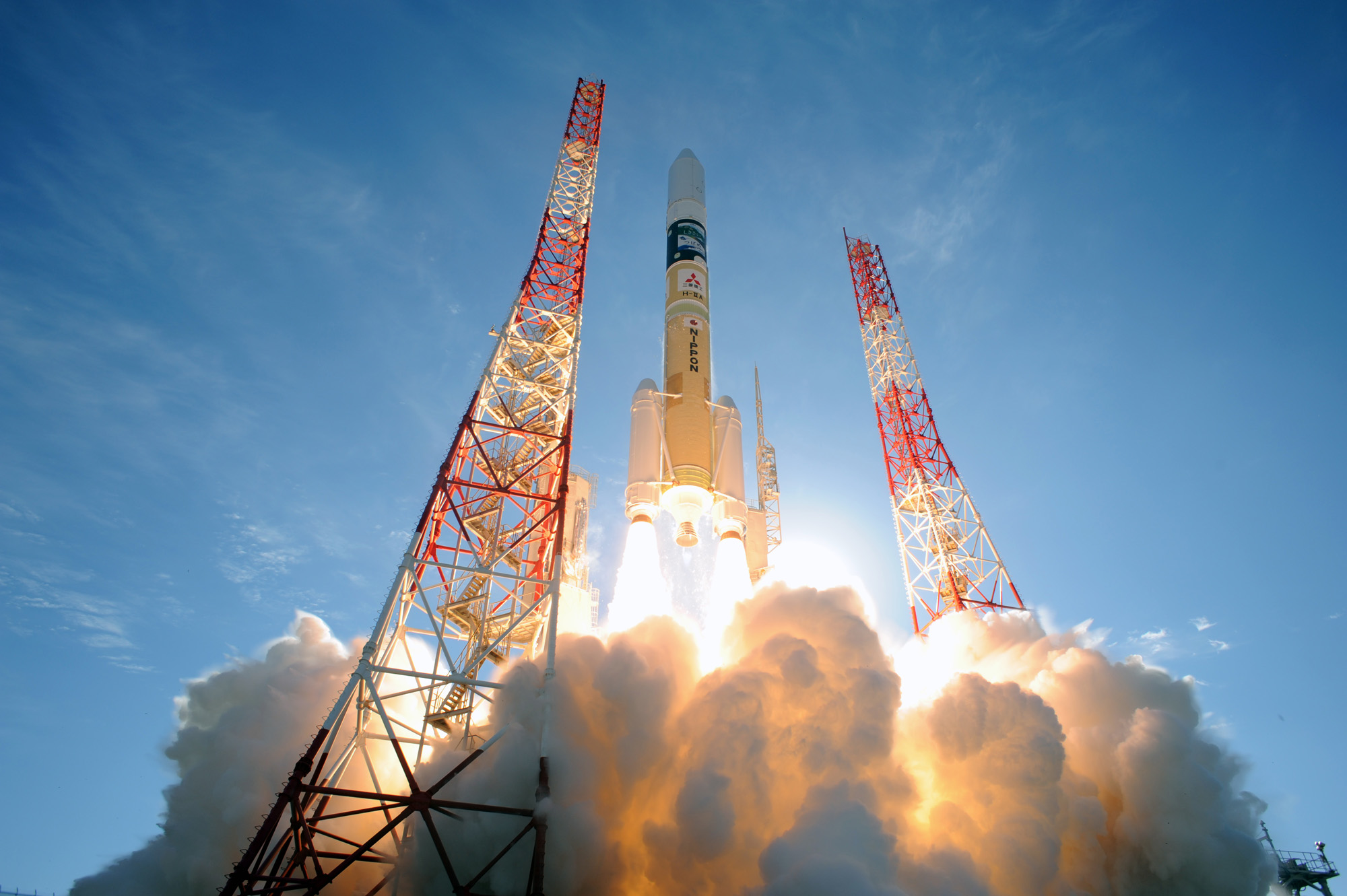Japanese Rockets H-IIA & H-IIB

The H-IIA and H-IIB are expendable launch rockets the Japan Aerospace Exploration Agency (JAXA) uses to launch satellites, as well as other spacecraft, into space. The rockets are operated by Mitsubishi Industries. Launches happen at the Tanegashima Space Center in Japan.
Both of the rockets are derivatives of the previous H-II rocket, which was changed to improve cost control and reliability. The H-IIA made its first launch in 2001 and has two operational variants. The HII-B made its first launch in 2009.
Notable launches of H-IIA include Akatsuki (which is studying the planet Venus), Selene (which studied the moon) and Hayabusa2 (which is going to study asteroid Ryugu and return a sample from it.) The H-IIB is designed to send H-II Transfer Vehicles (or cargo spacecraft) to the International Space Station.
JAXA is currently working on an upgrade program for the H-IIA that is supposed to give more launch capacity for geostationary satellites, simplifying the ground tracking (and saving cost), and also reducing the environmental restrictions for payloads. The agency is also planning a new launch vehicle, called H3, which is expected to launch in 2020. Its launch capacity to geostationary transfer orbit is expected to be higher than the H-IIA and H-IIB.
Physical characteristics
H-IIA
Height: 174 feet (53 meters)
Number of stages: 2
Fuel: liquid oxygen and liquid hydrogen (first and second stages) and polybutadiene composite solid propellant (solid rocket booster and solid strap-on booster)
Capacity – 4.4 tons (4 metric tons) to geostationary transfer orbit and 11 tons (10 metric tons) to low Earth orbit
H-IIB
Height: 186 feet (56.6 m)
Number of stages: 2
Fuel: liquid oxygen and liquid hydrogen (first and second stage) and polybutadiene composite solid propellant (solid rocket booster)
Capacity: 8.8 tons (8 metric tons) to geostationary orbit and 18 tons (16.5 metric tons) to an altitude of 217 to 285 miles (350 to 460 kilometers)
Notable launches
The first H-IIA launch took place on Aug. 29, 2001. It successfully carried two Japanese satellites into orbit: VEP 2 and LRE.
While H-IIA has had dozens of consecutive successful launches in recent years, it suffered a notable failure on Nov. 23, 2003, when a hot gas leak from one of the solid rocket booster motors destroyed the separation system, according to JAXA.
On Sept. 14, 2007, an H-IIA launched the Selene/Kaguya mission. The mission orbited the moon for nearly two years until the spacecraft was ordered to crash into the lunar surface on June 10, 2009. Among other science highlights, the mission created a gravity map of the far side of the moon, and created better lunar global topography maps that Google used for its Google Moon 3-D website.
The first H-IIB rocket launched its payload toward the International Space Station on Sept. 11, 2009. The launch of the H-II Transfer Vehicle (HTV) — nicknamed Kounotori — kicked off a series of cargo missions to the orbiting complex. The latest mission concluded in February 2017; all of the HTV missions have launched successfully.
On May 20, 2010, an H-IIA rocket launched the Akatsuki mission that was supposed to study Venus. The spacecraft, however, did not enter Venus orbit as planned in 2010 due to an engine problem in the spacecraft. The spacecraft orbited the sun for five years. Then engineers managed to insert Akatsuki into Venus orbit in December 2015, using its attitude control thrusters.
On Dec. 3, 2014, an H-IIA rocket launched the Hayabusa2 spacecraft. This is a sample return mission that is on its way to asteroid 162173 Ryugu. It is the successor mission to Hayabusa, a troubled (but successful) sample-return mission that wrapped up in 2010.
On Nov. 24, 2015, an H-IIA made its first launch with a commercial payload as a primary customer. This was for the Canadian Telstar 12V communications satellite. This H-IIA included an upgraded second stage.
Additional resources
Join our Space Forums to keep talking space on the latest missions, night sky and more! And if you have a news tip, correction or comment, let us know at: community@space.com.
Breaking space news, the latest updates on rocket launches, skywatching events and more!

Elizabeth Howell (she/her), Ph.D., was a staff writer in the spaceflight channel between 2022 and 2024 specializing in Canadian space news. She was contributing writer for Space.com for 10 years from 2012 to 2024. Elizabeth's reporting includes multiple exclusives with the White House, leading world coverage about a lost-and-found space tomato on the International Space Station, witnessing five human spaceflight launches on two continents, flying parabolic, working inside a spacesuit, and participating in a simulated Mars mission. Her latest book, "Why Am I Taller?" (ECW Press, 2022) is co-written with astronaut Dave Williams.
